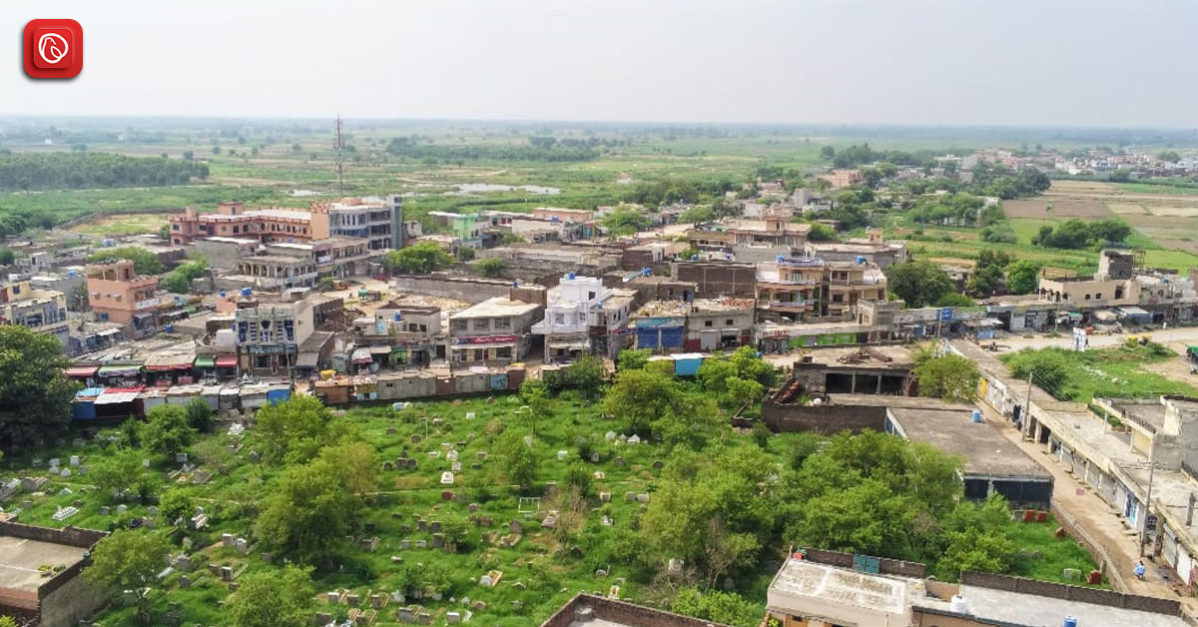
Karianwala, a thriving town in the Gujrat District of Pakistan, has a long history from 1206–1207. This cultural melting pot, where different castes live side by side, is a commercial hub for the surrounding communities. However, Karianwala’s tale is not over yet. Due to the town’s progressive ethos, which transcends international boundaries, a remarkable diaspora of citizens lives and works there.
Graana.com provides you with a thorough overview of Karianwala in this blog.
| Town Name | Karianwala |
|---|---|
| Location | Tehsil Gujrat, District Gujrat, Province Punjab, Country Pakistan |
| Castes | The town comprises people from various castes including Cobbler, Butt, Arain, Jogis, Mughal, Bhatti, Tarkhan, Gujjar, Wariahs, Shiekhs Machis, Jatt, and others. |
| Economy | Mainly business, biggest market in surrounding villages |
| Professions | Army, medicine, banking, police, education, etc. |
| Overseas | Living and working in developed countries such as Spain, England, Italy, Greece, Norway, France, Saudi Arabia, UAE, etc. |
| Literacy Rate | Rising trend |
| Founded | 1206–1207 |
| Historical | Site of a battle in 1780 CE |
The town of Karianwala is located in the Gujrat District of Pakistan. Its geographical coordinates are 32° 32′ 00″ North and 71° 51′ 00″ East. It is in the Punjab province, close to Jalalpur Jattan. Lahore, the provincial capital of Punjab, is located about 133 kilometres (82 miles) to the east.
Islamabad, the nation’s capital, is located a little bit farther to the northeast at a distance of 158 kilometres (98 miles). Karianwala’s economic vitality and cultural significance are bolstered by its advantageous location within Punjab and proximity to important cities.
Depending on your preferred transportation and starting point, there are several routes to Karianwala. Here are a few choices:
Records indicate that Karianwala was founded between 1206 and 1207. According to one explanation, the town’s name comes from the Punjabi/Urdu word “Kari,” which means “chain” and may allude to the town’s historical steel chain manufacturing. In 1780 CE, there was another war in the town.
Karianwala is home to a sizable population with diverse cultural backgrounds. Here live people from many different castes, such as Gujjar, Jatt, Butt, and many more. The community is home to both contemporary construction and historic structures.
The many historic homes and buildings still surviving in Karianwala are evidence of the town’s historical origins. Historically, the town’s economy has been based on trade, acting as the main marketplace for neighbouring settlements like Mallowal and Chalay Shref.
On the other hand, increased literacy has allowed locals to pursue a wider range of careers outside of business. The army, police, banking industry, medical field, and educational system now employ people from Karianwala.
This trend of going after bigger possibilities is wider than Pakistan. Numerous citizens have decided to live and work elsewhere, establishing themselves in industrialised nations such as Spain, Italy, and England.
The past century has seen Karianwala’s population develop quickly, which has increased the need for educational facilities. Although the government is involved, more than its resources might be required to meet the needs. As a result, private schools have emerged alongside public ones, providing locals with more choices.
Al Suffah Model School, The Educators, Jinnah Public School, and Danish International Grammar School & Girls College are a few of the area’s renowned educational institutions. Students have access to a variety of educational possibilities through these schools.
Local historians are still trying to figure out Karianwala’s exact origins, although evidence points to a village emerging between 1206 and 1207.
The settlement was founded by an enslaved person called Saiy Satwan, and it was constructed under the guidance of Qutbuddin Aibak, the first Sultan of Delhi. The Mamluk Sultanate, often called the Ghulam dynasty, was established by Aibak.
The history of the town is also entwined with Mughal governance. Under Akbar’s rule, Masami Mahbu founded a base called “Akbarabad.” Not only did Masami’s descendants populate Karianwala, but they also established towns in neighbouring locations.
Islamgarh Fort, built in Islamgarh close to Karianwala, added another chapter to the town’s past. The area grew more in 1828 when Maharaja Ranjit Singh founded a mint there.
The climate in Karianwala is mild, with distinct summer and winter seasons. Summers may be very hot, with highs of 50°C (122°F) during the day.
Following are some of the FAQs on the town.
Traditionally, commerce is the main industry, with Karianwala as the biggest market for nearby villages. However, the rise in literacy suggests diversification into sectors like education, medicine, and banking.
Karianwala experiences a moderate climate with hot summers (reaching 50°C) and cold winters.
There is no airport in the town.
Various castes residing in Karianwala include Gujjar, Jatt, Butt, Bhatti, and others.
The provided information doesn’t explicitly state the nearest major city. However, considering Karianwala is in the Gujrat District, Gujrat City itself is likely the closest major urban centre.
This was all about Karianwala. For more information, visit Graana.com.
ISLAMABAD: The Capital Development Authority (CDA) and the Asian Development Bank (ADB) have entered into…
Islamabad: The Capital Development Authority (CDA) has announced plans to issue possession letters to allottees…
Islamabad, [24 March 2025] – Graana.com, Pakistan's leading online real estate marketplace, is proud to…
Islamabad, Pakistan – March 2025: Graana.com, Pakistan’s leading real estate platform, has proudly partnered with…
KARACHI: Sindh Local Government Minister Saeed Ghani chaired a meeting on Monday to review measures…
ISLAMABAD: The Capital Development Authority (CDA) has unveiled plans to develop a modern food street…